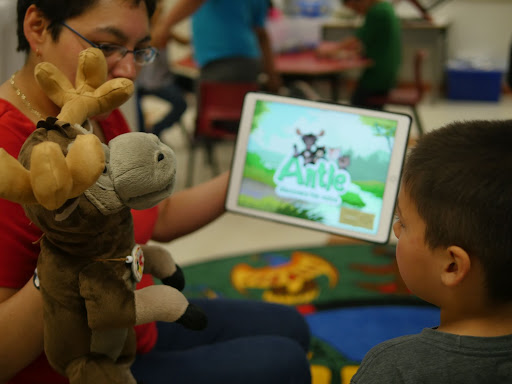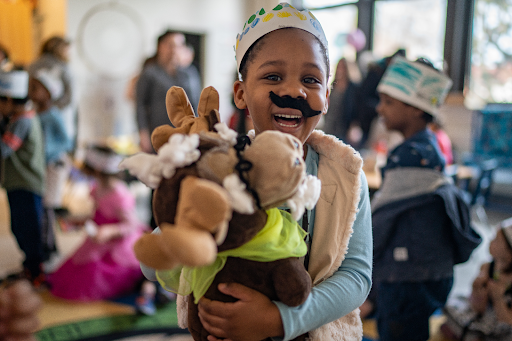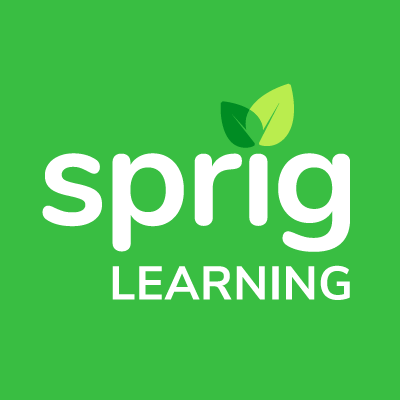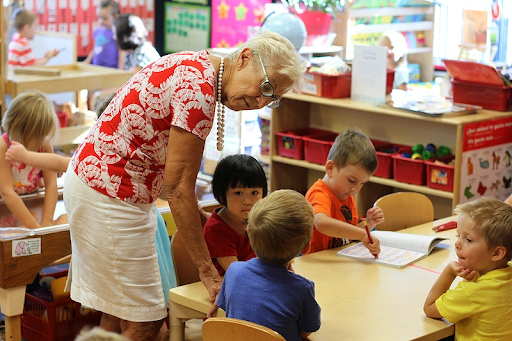Hand Puppets for Kids: How They Enhance Early Literacy Development
Educators, parents, caregivers and anyone else involved in the early childhood education of a child, are always on the lookout for new and innovative ways to help young learners develop their early literacy skills.
While practices such as reading aloud and practicing phonics are certainly effective, they are best supported with high-quality classroom resources.
Sprig Learning supports both, with evidence-based teaching tools such as Sprig Reading, and resourceful learning materials such as storybooks and language cards in the Sprig Store.
What about hand puppets as a tool to enhance early literacy development?
Puppets have always featured in early literacy playshops, and for good reason, because of their ability to attract and retain attention at an early age.
In this post, Sprig explores the many benefits of using hand puppets with young students to promote early literacy, and offers some tips and tricks for incorporating them into teaching routines.
How Hand Puppets Enhance Early Literacy Development

Research has shown that evidence-based reading practices, such as phonics instruction and repeated reading, can significantly improve literacy scores for young students who are learning how to read.
However, there are many other innovative approaches to promoting literacy that can engage children and make learning fun, such as the use of hand puppets in the classroom.
How exactly do puppets help enhance early literacy development? Let’s find out…
Hand Puppets Encourage Active Participation
When children are engaged in a story or activity with a hand puppet, they are actively participating in the learning process.
This sort of active participation helps to improve their attention span, listening skills, and overall comprehension of the learning material in the classroom.
Foundational reading skill instruction should be explicit. They should also be understood by the students. When early learners show more willingness to participate in the lessons, they better absorb explicit instruction.
Hand Puppets Promote Imaginative Play
Hand puppets can be used to act out stories, characters, and scenes from books, which encourages imaginative play and creative thinking.
This type of play is essential for young children, as it helps them to develop their language skills and build a strong foundation for future learning.
Also, through imaginative play and storytelling, hand puppets can help children to expand their vocabulary and develop a deeper understanding of language. As children interact with their hand puppets, they can learn new words and concepts in a fun and engaging way.
Developing vocabulary and oral language skills is a foundational aspect of early reading skills.
Hand Puppets Foster Social and Emotional Development
Hand puppets help children to develop social and emotional skills, such as empathy, communication, and cooperation.
By interacting with their puppets and other children, they learn how to express their feelings and work together to achieve a common goal.
Social and emotional learning is growing to be a massive aspect of early childhood education. When properly nurtured, it leads to improved academic outcomes which include better literacy scores.

Moose, Beaver, Fox and Bear. Four hand puppet characters in the Sprig Store.
Tips for Using Hand Puppets to Enhance Early Literacy Development
From the prior section, it is understood that incorporating hand puppets into reading and storytelling activities can help to capture children’s attention and make learning a more interactive experience.
Let’s now look at some tips on how to best optimize the use of hand puppets in the classroom.
Choose Age-Appropriate Materials
When selecting hand puppets for young children, make sure they are made from safe and durable materials that are appropriate for their age group.
Look for puppets that are easy to maneuver and comfortable to wear.
Incorporate Puppets into Storytime
Use hand puppets to act out stories during storytime, and encourage children to participate by asking them to take on roles or make suggestions for the story.
This can help to improve comprehension and encourage active listening.
Create Your Own Puppet Shows
Help children create their own puppet shows based on their favorite books or stories.
This can help to improve creativity, language skills, and imaginative play.
Use Puppets to Teach New Concepts
Hand puppets can be used to teach new concepts or reinforce ideas.
For example, use a puppet to help teach letters, numbers, or colors, or to act out social situations and demonstrate appropriate behavior.
Use Hand Puppets in the Classroom to Teach Early Literacy!

To conclude, hand puppets can be a powerful tool for promoting early literacy development in young children. When teachers incorporate hand puppets into their teaching routine, it makes a world of difference in the engagement and learning that happens in the classroom.
A systematic literature review was conducted on the use of hand puppets to reveal that using hand puppets played a key role in early childhood language development.
Besides improving listening skills and making children more self-confident, puppets also increased word recognition and vocabulary in children.
By encouraging active participation, promoting imaginative play, and fostering social and emotional development, hand puppets can help children to develop strong literacy skills.
By combining the evidence-based reading practices with the innovative use of puppets, educators can help young children to become confident, engaged, and successful readers.



